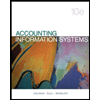
Internal Control: Internal control refers to the policies, and plans of the business organization along with other measures with a view to safeguard its assets, encourage the employees to adhere to the plans, to improve on the operational efficiency, and to ensure correct and reliable accounting information. Internal control is a process which ensures continuous reliability of accomplishment of a company’s objectives, related to operations, financial reporting, and in conformity with laws and regulations.
Five elements of internal control:
- Control Environment: Control Environment refers to the attitude of top brass of the company or the corporate culture. The top brass of the company must set the tone to improve the morale for rest of the employees of the business.
- Risk assessment: The business must be able identify the risk associated with it, and accordingly use the internal control to safeguard its assets and ensures fairness in presentation in accounting information.
- Control procedures: The objective of setting the control procedure is to ensure that the business achieves its objectives.
- Monitoring controls: The internal control used in the business is being monitored by the internal auditors who are hired by the business, to ensure that the employees are adhering to the policies of the business and running the operations efficiently. The external auditors on the other hand ensures that the business accounting records are being maintained in accordance with the Generally Accepted Accounting Principles (GAAP).
- Information and communication: Information and communication system is important for a business and hence only authorized persons should be allowed the access to the confidential accounting information. Approvals are also should be made mandatory for the transactions by the
control system.
To suggest: Appropriate control procedures for preventing / detecting the theft of cash.
Trending nowThis is a popular solution!

Chapter 8 Solutions
Bundle: Accounting, Chapters 1-13, 26th + Working Papers, Chapters 1-17 For Warren/reeve/duchac's Accounting, 26th And Financial Accounting, 14th + ... For Warren/reeve/duchac's Accounting, 26th
- Compute the number of days sales in account receivable.arrow_forwardI am trying to find the accurate solution to this general accounting problem with appropriate explanations.arrow_forwardA business purchased a machine for $120,000 with an estimated useful life of 8 years and salvage value of $24,000. What is the annual straight-line depreciation amount?arrow_forward
- I am searching for the most suitable approach to this financial accounting problem with valid standards.arrow_forwardI need help with this financial accounting problem using proper accounting guidelines.arrow_forwardCan you solve this general accounting question with accurate accounting calculations?arrow_forward
- Need helparrow_forwardI am looking for the correct answer to this general accounting problem using valid accounting standards.arrow_forwardRoxbury Designs applies manufacturing overhead costs to products at a budgeted indirect-cost rate of $75 per direct manufacturing labor hour. A client has requested a bid on a special order for a customized necklace. Estimates for this order include: Direct materials of $63,500, 380 direct manufacturing labor hours at $22 per hour, and a 35% markup rate on total manufacturing costs. What is the bid price for this special order?arrow_forward
- I need help with this general accounting question using the proper accounting approach.arrow_forwardLiam Corp. purchased 12,000 shares of Horizon Ltd.'s stock for $320,000 on August 15, 2014, classified as available for sale. Market value decreased to $195,000 by December 31, 2014. Liam reclassified this as trading securities in November 2015 when market value increased to $275,000. What effect on 2015 income should Liam report for Horizon Ltd. shares?arrow_forwardI am looking for the correct answer to this financial accounting question with appropriate explanations.arrow_forward
 Survey of Accounting (Accounting I)AccountingISBN:9781305961883Author:Carl WarrenPublisher:Cengage LearningBusiness Its Legal Ethical & Global EnvironmentAccountingISBN:9781305224414Author:JENNINGSPublisher:Cengage
Survey of Accounting (Accounting I)AccountingISBN:9781305961883Author:Carl WarrenPublisher:Cengage LearningBusiness Its Legal Ethical & Global EnvironmentAccountingISBN:9781305224414Author:JENNINGSPublisher:Cengage Pkg Acc Infor Systems MS VISIO CDFinanceISBN:9781133935940Author:Ulric J. GelinasPublisher:CENGAGE L
Pkg Acc Infor Systems MS VISIO CDFinanceISBN:9781133935940Author:Ulric J. GelinasPublisher:CENGAGE L Financial Accounting: The Impact on Decision Make...AccountingISBN:9781305654174Author:Gary A. Porter, Curtis L. NortonPublisher:Cengage Learning
Financial Accounting: The Impact on Decision Make...AccountingISBN:9781305654174Author:Gary A. Porter, Curtis L. NortonPublisher:Cengage Learning




